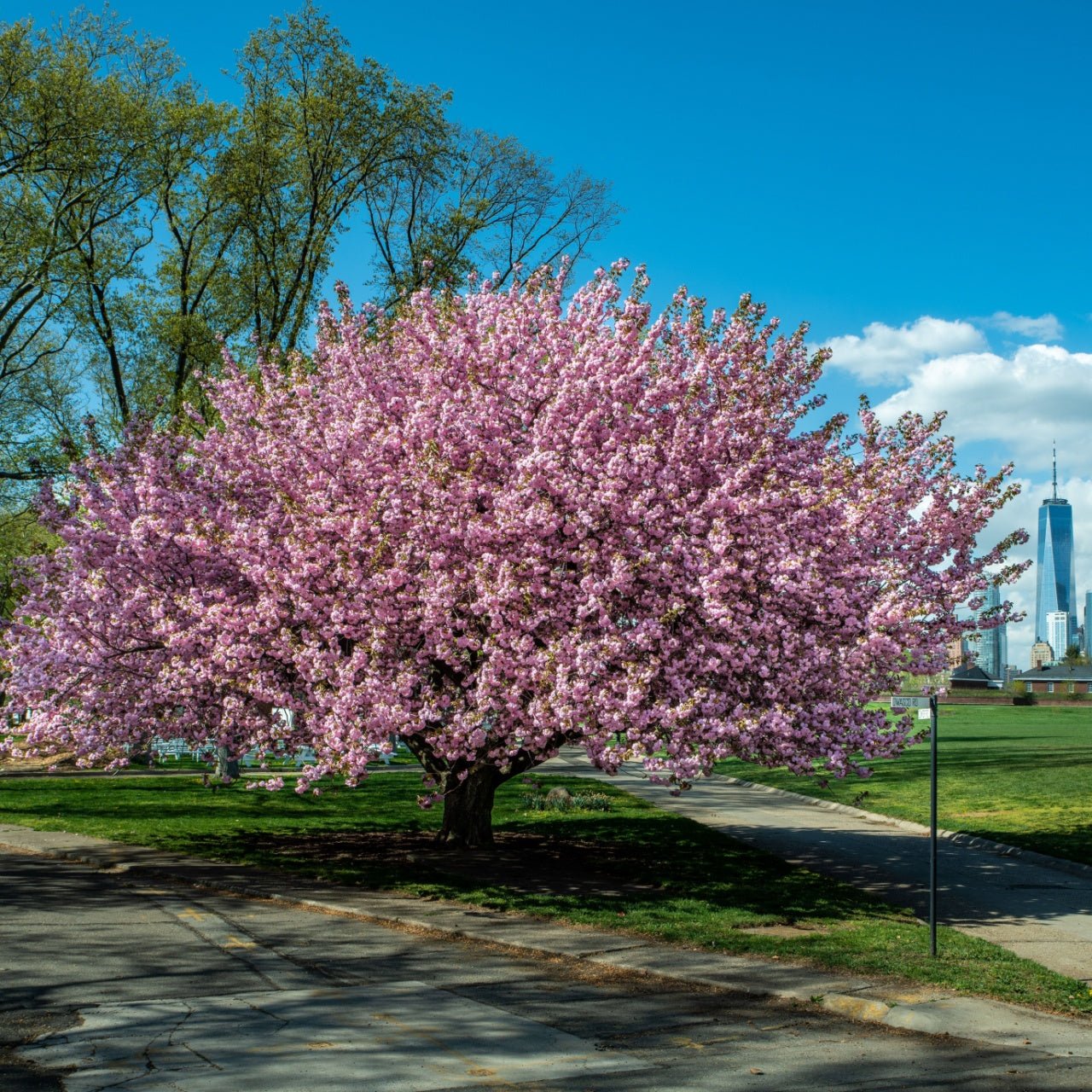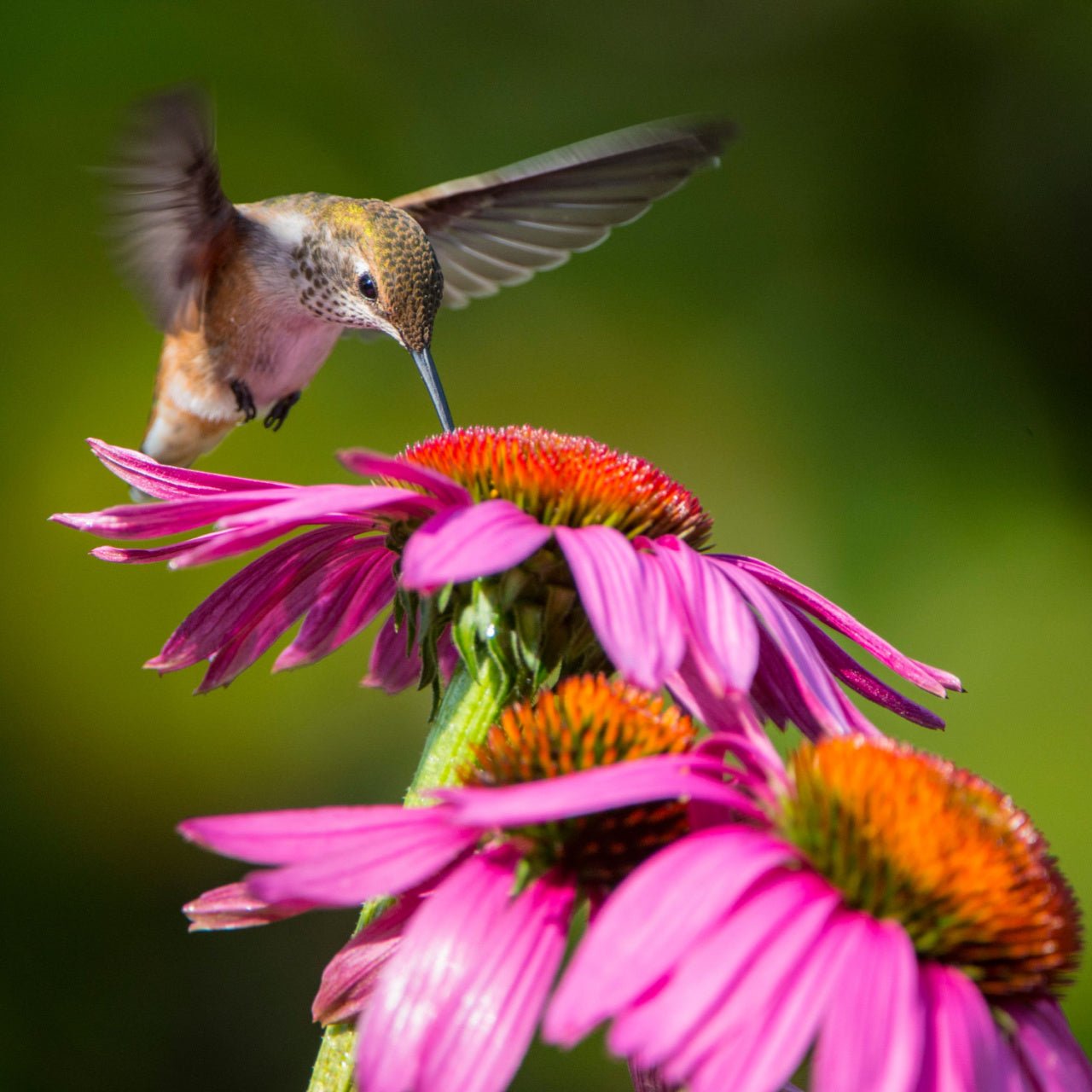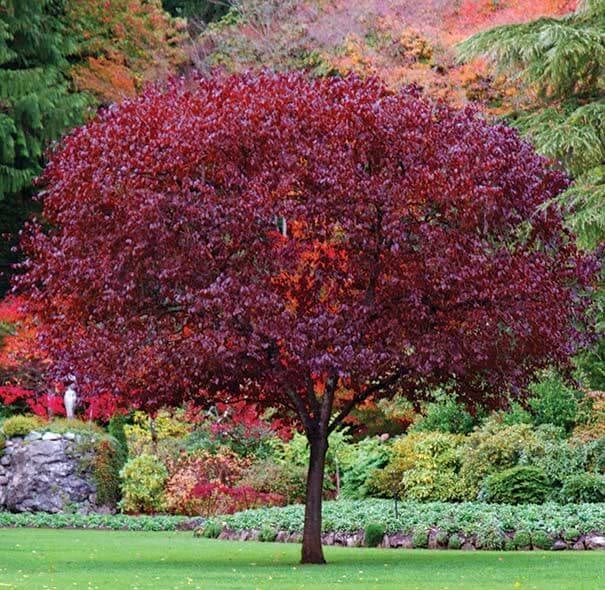
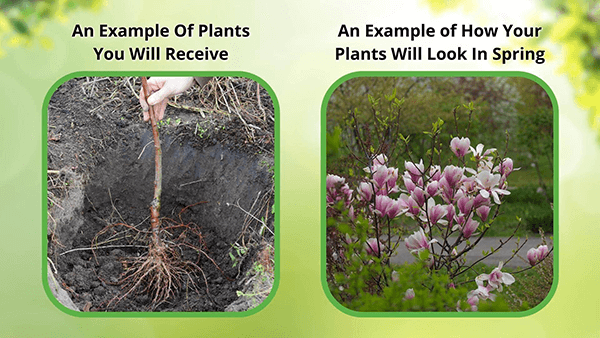

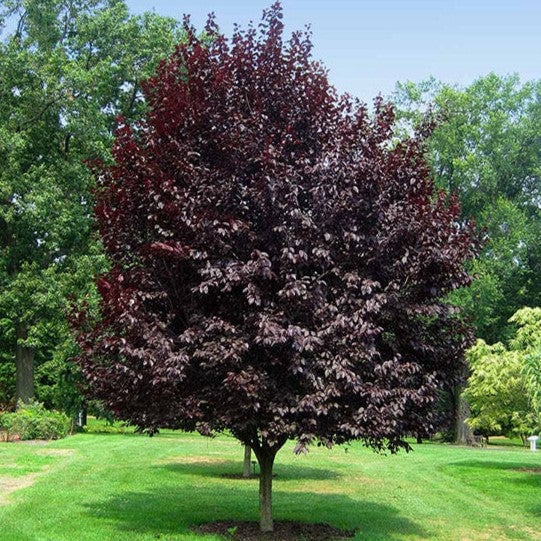
Cistena Plum
Vibrant purple foliage adds color
Low-maintenance and hardy plant
Ideal for small garden spaces
Thrives in
ZONE 2ZONE 3ZONE 4ZONE 5ZONE 6ZONE 7This plant ships:
November 20251 Year Guarantee on all plants
Cistena Plum - Prunus × cistena
The Cistena Plum is a glorious, fruit bearing tree that shines in every season. It is also known as the red leaf plum or purple leaf cherry tree, because of its purple and red coloring in the leaves and bark. The fruits are drupes – a fleshy fruit with thin skin and a stone pit, and are somewhere between the size of a plum and a cherry. These fruits are a favorite of birds and small mammals, so they are a perfect choice for a wildlife lover's garden. The delicate pink and white flowers against the purple-red branches makes for a warm, vibrant centerpiece for your garden space.
Plant Details - Cistena Plum
Family: Rosaceae
Light Requirement: Full sun
Water Needs: Moderate
Height: 5-8 ft
Spread: 5-8 ft
Soil Preference: Moist, well drained, clay, loam, sand
Season of Interest: Spring, Summer
Flower Color: Pink, White
Fruit: Purple-red drupes
Wildlife Value: Birds, Butterflies, Bees
Notable Characteristics - Cistena Plum
This purple-red tree is often considered a shrub because of its woody, twiggy appearance. The Cistena Plum grows in an upright pattern but spreads out as it matures, stretching its branches horizontally. It can be left to grow naturally should you enjoy the sprawl, but can also easily be pruned to a more manageable shape. This unique growth pattern requires some forethought before planting, to ensure no other plants get crowded out. This tree flowers in the spring, sprouting among small pink and white blooms that resemble cherry blossoms amidst its leaves. The foliage is a true purple-red color – no green in sight. The bark even has such hues, making the whole bush harmonious in spring, summer and fall.
Landscape and Maintenance
The Cistena Plum, while gorgeous, can be quite a handful. It is toxic to animals like cats, dogs and horses so take care when planting in an area frequented by your furry friends. It is also highly prone to diseases such as leaf spot, dieback, leaf curl, powdery mildew, root rot, honey fungus and fire blight. The tree is prone to damage by many insects as well, such as spider mites, japanese beetles, leafhoppers, caterpillars and aphids. The wood may see damage from borers and trunk cankers caused by fungi or bacteria. Due to all its vulnerabilities, it only has a lifespan of around 10 years, but is sure to be a true beauty and wonderful addition to your garden for every one of them.
This Is How Your Plants Will Look upon Delivery

Bloom Season
Spring
Bloom/Foliage Color
Pink
Height at Maturity
Over 25 Feet
Care
Cistena Plum thrives in well-drained soil and prefers regular watering. Prune annually to maintain shape and remove any dead or diseased wood. Fertilize in early spring to support growth and flowering. Watch for pests and treat them promptly if needed.
Plant Reproduction
Cistena Plum spreads through suckers and seeds, forming dense clusters
Plant bare root trees during the dormant season in early spring or late fall (November through April). Dig the hole twice as wide as the roots so the soil is well-drained. Position the tree so the root flare is at or just above ground level. Fill the hole back with the soil you dug from and water. Maintain soil moisture, especially in the tree's early years, by providing deep, regular watering. Apply a 2-4 inch mulch away from the trunk at the base to retain moisture and suppress weeds. Prune trees during the first few seasons to establish strength and resilience, remove damaged branches, and continue maintenance pruning as the tree matures. Regularly inspect for pests and diseases and apply integrated pest management practices. Protect young trees from mechanical damage and extreme temperatures with tree guards, and stake them if necessary for support, removing the stakes after one or two years.
Shipping date depends on the date displayed and chosen when you order from the product's page.
We only accept returns on plants verified dead. If you think your plants have died, we offer a 1 year warranty, please use this File a Claim Link to verify dead plants and start with return warranty process.





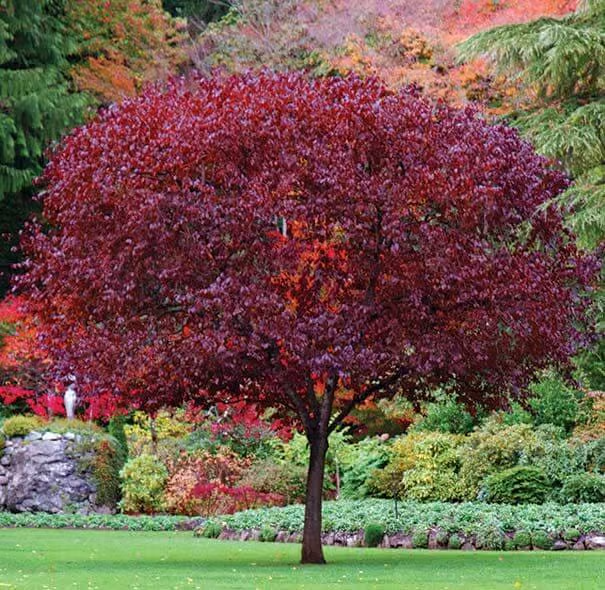
Spectacular Spring Blooms:
The Cistena Plum tree produces striking deep purple blossoms in spring, offering a dramatic and vibrant display that enhances your garden’s beauty. Its floral show is both eye-catching and elegant.
Compact and Versatile:
With its manageable size, the Cistena Plum is ideal for smaller gardens, courtyards, or urban settings. It fits well in confined spaces while still providing impressive visual appeal.
Unique Foliage Color:
This tree features rich, dark purple foliage that maintains its captivating color throughout the growing season. The unusual leaf color adds a distinctive touch to any landscape.
Attracts Pollinators:
The blooming Cistena Plum draws bees, butterflies, and other pollinators, contributing to a vibrant and healthy garden ecosystem. Its flowers support local wildlife and increase garden biodiversity.
Caring Tips
How do I care for my Cistena Plum?
Each box contains detailed care instructions and information about your product. But here's the basics.
Care Tips
Cistena Plum thrives in well-drained soil and prefers regular watering. Prune annually to maintain shape and remove any dead or diseased wood. Fertilize in early spring to support growth and flowering. Watch for pests and treat them promptly if needed.
Light Requirements
The Cistena Plum thrives in full sun to partial shade. It should acquire at least 6 hours of direct sunlight daily for optimal growth and vibrant foliage. In shaded areas, it may not flower as profusely.
Hardy Planting Zones
2 • 3 • 4 • 5 • 6 • 7
Header
Use this content to share information about your store and products.
Frequently Asked Questions
How often should I water my plants?
How do I know if my plant is getting too much or too little sunlight?
What should I do to prepare my plants for winter?
What are the signs that my plant needs fertilizing?
How can I prevent pests from damaging my plants?
How do I choose the right plant for my climate zone?





